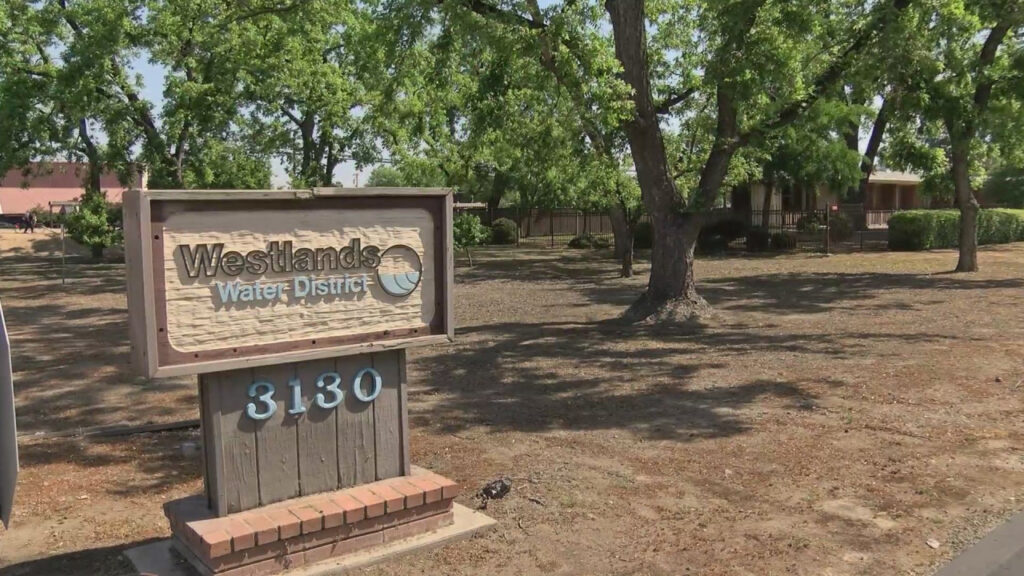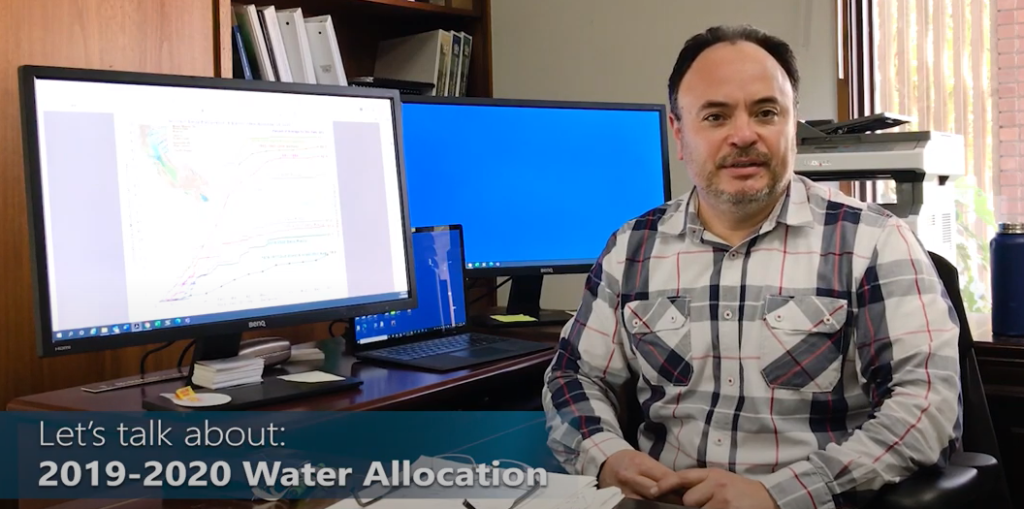Happy World Water Day!
Every year on March 22, the United Nations celebrates World Water Day to highlight the importance of safe, reliable water all over the world. This year’s theme is valuing water for all its uses – including agriculture, food security, employment, and economic growth – and valuing water infrastructure that helps move water where it’s needed. Water is the lifeblood of all we do as humans; however, there are new and old concerns when it comes to water availability that must be addressed.
Water scarcity continues to be of concern, and these concerns will only be exacerbated by climate change and population growth. The impacts of dry years will be felt by the families across the state and around the world who are relying on the food produced in Westlands.
No one can control how much water falls from the sky, but Westlands does its best to ensure that the water that reaches the District is not wasted. Westlands works closely with farmers and farming communities in the District to maximize the use every drop of water. This includes investing more than $14.2 million since 2017 in the District’s water infrastructure to support continual improvements by replacing pipeline and upgrading metering technology. Westlands also encourages farmers to deploy innovative water conservation practices, including investing in irrigation efficiency technology and adjusting planting and harvesting techniques to increase yield with less water and land.
Despite all these efforts, the impact of climate change and drought are still felt by farmers and communities served by Westlands.
Prioritizing Water Infrastructure
Since the inauguration, the Biden Administration has begun tackling a wide range of issues, from COVID-19 response to immigration to racial equity. These are all incredibly important issues to the Central Valley, as is the Administration’s push to “invest in modern and sustainable American infrastructure.”
Unfortunately, the reality is that the ailing water infrastructure in California threatens access to water for the Central Valley, including water for many of the state’s most vulnerable communities. Parts of the Central Valley Project infrastructure, which carry water to Westlands, have lost up to 30% of their conveyance capacity over time due to subsidence; this subsidence results in higher operational and power costs, ultimately requiring millions of dollars in higher costs to convey less water through the system every year.
That’s the reason Westlands is among a broad coalition of water agencies pursuing legislation to address this issue. Infrastructure investment – unlike the weather – is something on which policymakers can have a meaningful impact. Westlands looks forward to continuing to work with state and federal officials to build back better.
Primary Sidebar
In the District

RESPONDING TO A 5% ALLOCATION
The U.S. Bureau of Reclamation’s announcement that the initial allocation for South-of-Delta Repayment and Water Service Contractors is only 5% is no surprise given current hydrologic conditions and regulations that restrict operations of the Central Valley Project. But it is devastating nonetheless for farmers and communities across the region that rely on water from the CVP and jobs created by irrigated agriculture. It’s also yet another reminder of the urgency behind our continued work with policymakers, regulators, and the farming community to maximize water use efficiency, improve climate resilience, and ensure greater water supply reliability now and in the future.

WATCH: LET’S TALK ABOUT WESTLANDS’ WATER SUPPLY
Check out our recent “Let’s Talk About It” video featuring Westlands Chief Operating Officer, Jose Gutierrez, discussing water year 2020, the allocation provided by the U.S. Bureau of Reclamation to South-of-Delta Agricultural Water Service Contractors, the allocation’s effects on District and farm operations, and how water year 2021 is shaping up.
Recommended Resources
SENATOR HURTADO INTRODUCES THE STATE WATER RESILIENCY ACT OF 2021
Last month, California State Senator Melissa Hurtado (D-Sanger) introduced Senate Bill 559, the “State Water Resiliency Act of 2021,” to improve California’s water resilience and restore critical infrastructure from the impacts of drought and climate change. The bill would fund repairs to the Friant-Kern Canal, Delta-Mendota Canal, San Luis Canal and California Aqueduct – the main water conveyance infrastructure South-of-the Delta.
MULTI-AGENCY COLLABORATION RESTORES HABITAT CRITICAL TO NATIVE SPECIES
The Lower Yolo Ranch Tidal Restoration Project is a collaboration between multiple agencies including the Department of Water Resources (DWR) and Westlands Water District (Westlands) which serves western Fresno and Kings counties, Department of Fish and Wildlife, U.S. Bureau of Reclamation, U.S. Fish and Wildlife Service, and National Marine Fisheries Service. The agencies are working together to meet a portion of state and federal requirements to restore 8,000 acres of tidal wetland habitat in the Sacramento-San Joaquin Delta. The project has been in the works for 13 years and restores a total of 1,682 acres of tidal marsh. Click the links to read the blog and watch the video.
